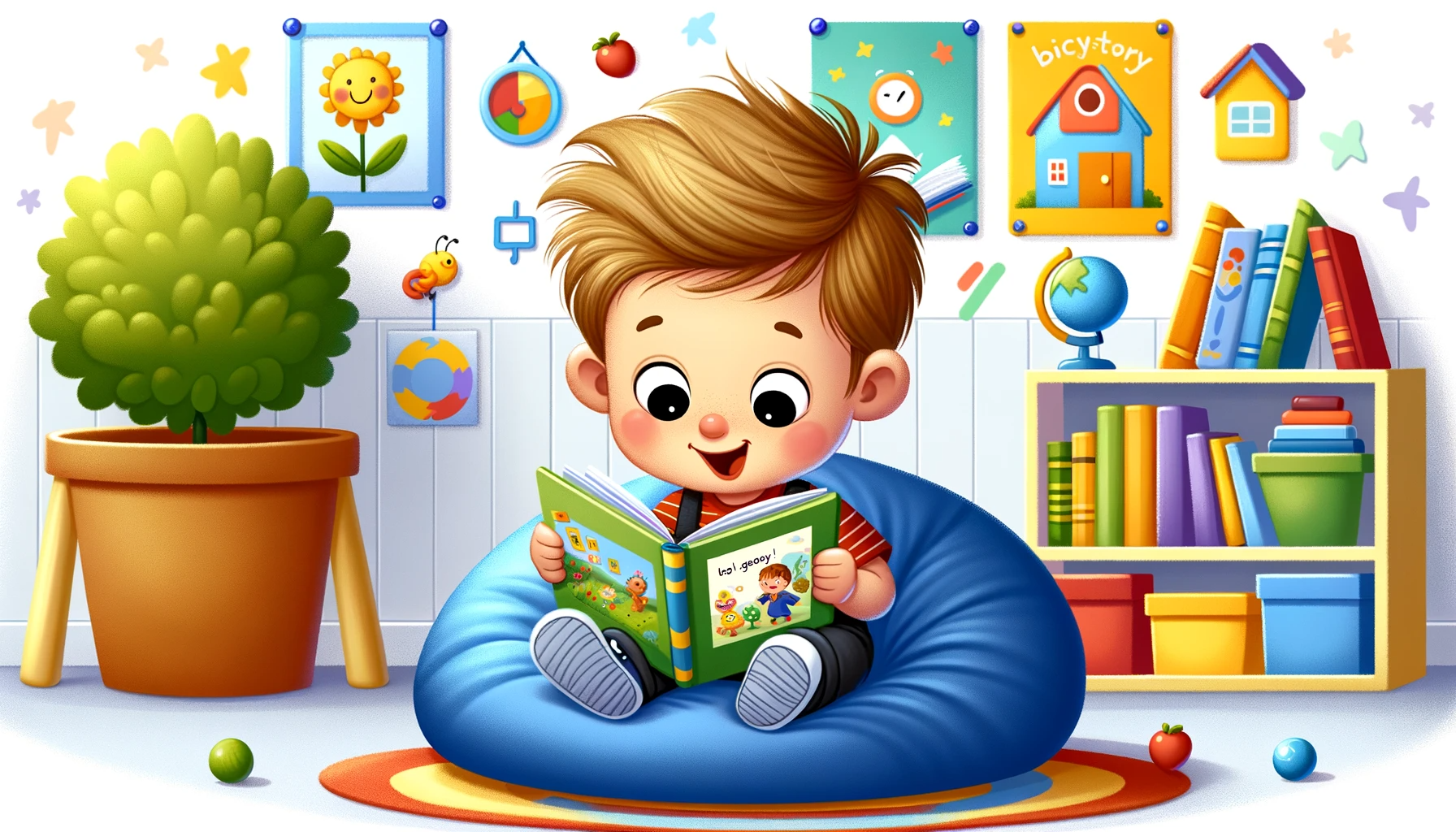Unlocking Language Skills with Rhyming: Engaging Young Readers
The magic of rhyming in children’s books is a potent tool for fostering language skills in young kids. These fun, catchy rhymes captivate young readers, making the learning process enjoyable and memorable. By exploring how rhyming works for young children, we can appreciate its significant role in language development and engagement.
Rhyming books, with their rhythmic and repetitive patterns, are a great way to introduce young readers to the sounds and structures of language. As children listen to and repeat rhymes, they begin to notice phonemic similarities between words. This awareness is a fundamental aspect of phonemic awareness, a key component of early reading skills. For example, rhyming stories like those found in a classic Dr. Seuss book or the playful verses in “Chicka Chicka Boom Boom” help children discern the distinct sounds within words, laying the groundwork for decoding and reading.
Moreover, these rhymes are inherently fun and appealing to children. The silliness and creativity found in books with silly rhymes or simple stories like “Brown Bear, Brown Bear, What Do You See?” keep young readers engaged and entertained. This engagement is crucial in maintaining children’s interest in reading and learning. When kids enjoy the material, they are more likely to participate actively, which reinforces their learning experience.
Additionally, the repetitive nature of rhymes in children’s books aids in memory and retention. Children are more likely to remember words and phrases that are presented rhythmically and repetitively, thus expanding their vocabulary and language comprehension. These books often combine rhymes with vivid illustrations, further enhancing understanding and recall.
Furthermore, rhyming books often introduce young kids to a wide range of vocabulary in a context that is easier to understand. Through engaging stories and characters, children are exposed to new words and concepts, making these books an excellent tool for language enrichment.
In summary, the magic of rhyming in children’s literature lies in its ability to simultaneously educate and entertain. By engaging young readers with fun, catchy rhymes, these books play a vital role in developing phonemic awareness and language skills, setting the foundation for lifelong literacy and a love of reading.
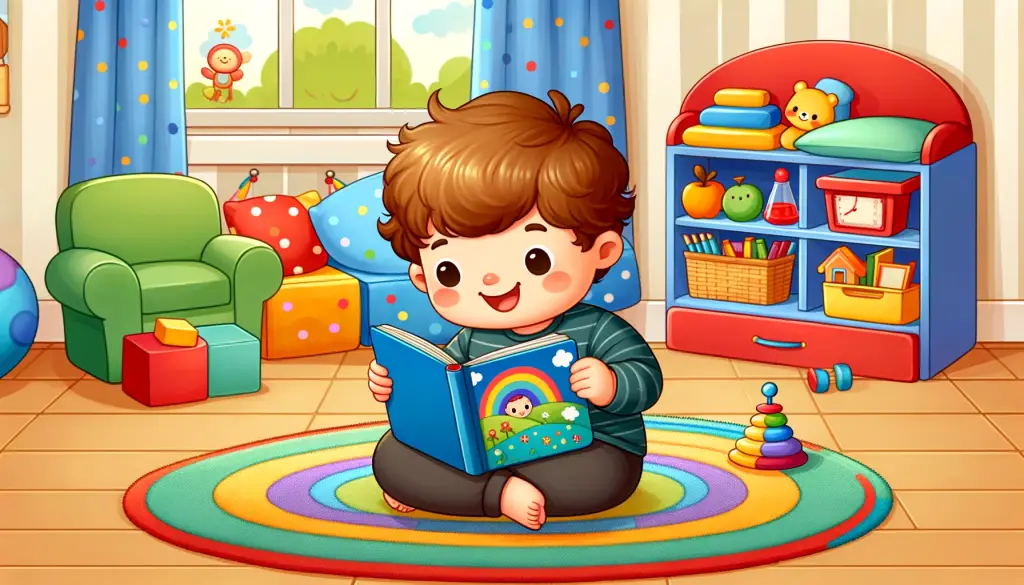
Rhyming Books for Kindergarten: Enriching Young Minds
1. Chicka Chicka Boom Boom by Bill Martin Jr. and John Archambault
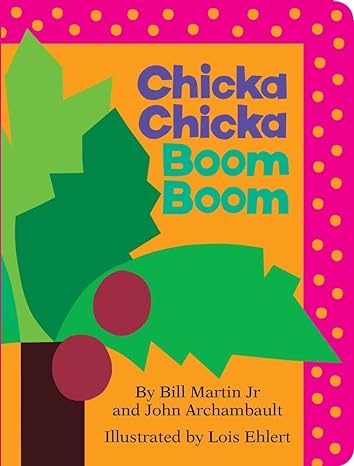
This classic story features a catchy alphabet rhyme that engages young readers. With its vivid illustrations and rhythmic text, “Chicka Chicka Boom Boom” is perfect for teaching the alphabet in a fun way.
Available on Amazon, it’s a must-have for any kindergarten classroom.
2. Brown Bear, Brown Bear, What Do You See? by Bill Martin Jr.
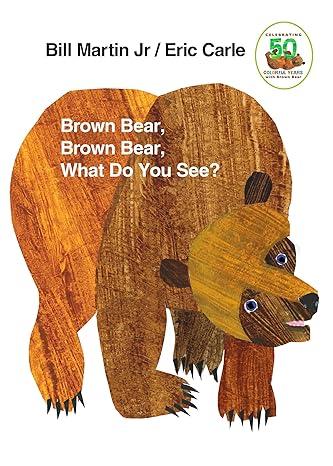
Another classic from Bill Martin Jr., this book uses simple, repetitive rhymes to introduce colors and animals. Its rhythmic pattern and charming illustrations make it a favourite book among young children.
Available on Amazon, it’s great for early language development.
3. The Cat in the Hat by Dr. Seuss
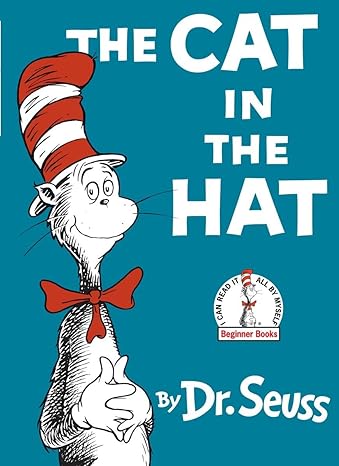
A quintessential Dr. Seuss book, “The Cat in the Hat” combines silly rhymes with an unforgettable story. It’s a funny book and a great way to introduce children to the joy of reading through rhyme.
Find this classic on Amazon for a fun and educational read.
4. Green Eggs and Ham by Dr. Seuss

This Dr. Seuss masterpiece uses rhyming to encourage kids to try new things. The repetitive and simple rhymes make it ideal for beginner readers.
Available on Amazon, it’s a delightful addition to any young reader’s collection.
5. Goodnight Moon by Margaret Wise Brown
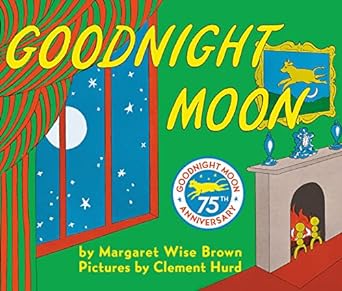
“Goodnight Moon” offers a gentle, rhyming bedtime story. Its calm rhythm and soothing words make it a perfect book to end the day with.
Find this peaceful read on Amazon.
6. Llama Llama Red Pajama by Anna Dewdney
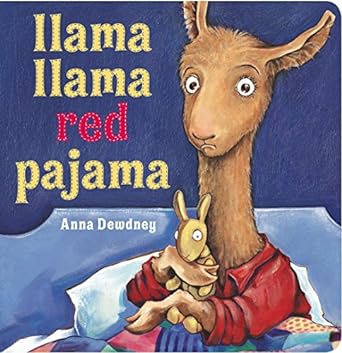
This book tells a relatable story in rhyme, capturing the nighttime worries of young children.
Its rhythmic text and heartwarming story are available on Amazon.
7. Room on the Broom by Julia Donaldson
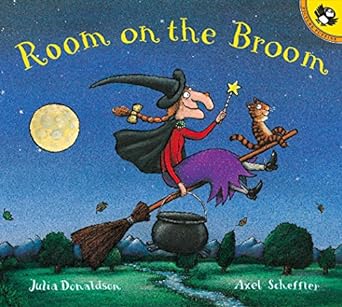
Julia Donaldson’s tale combines rhymes with a fun, adventurous story. It’s a fantastic way to engage young readers with its whimsical rhymes and captivating plot.
Room on the Broom is available on Amazon.
8. The Gruffalo by Julia Donaldson
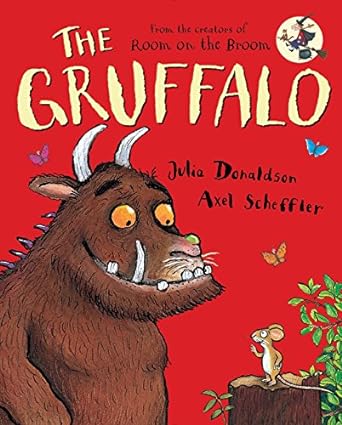
Another classic from Donaldson, “The Gruffalo” uses rhyming text to tell a clever, captivating story. Its rhythmic narrative is perfect for kindergarten-aged children and is available on Amazon.
9. Where the Wild Things Are by Maurice Sendak
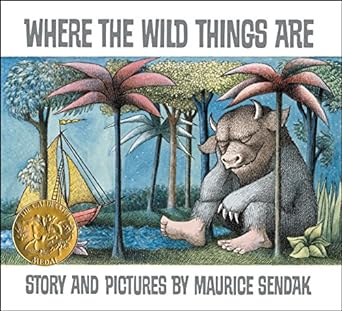
Though not a traditional rhyming book, its rhythmic and poetic text resonates with young readers. This beloved story can be found on Amazon.
10. The Very Hungry Caterpillar by Eric Carle
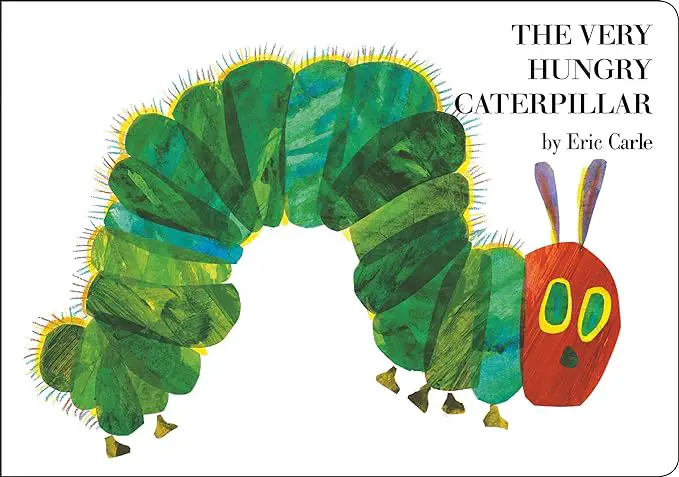
Eric Carle’s classic uses simple words and a repetitive story pattern, making it a great rhyming book for young readers. Available on Amazon, it’s ideal for teaching days of the week and counting.
11. The Pout-Pout Fish by Deborah Diesen

A fun and rhythmic story about a gloomy fish learning to be happy, “The Pout-Pout Fish” is a great way to discuss emotions with children. It’s available on Amazon.
12. Giraffes Can’t Dance by Giles Andreae
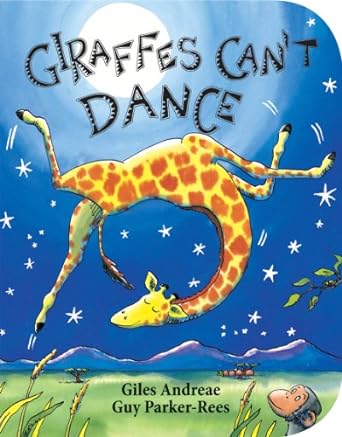
This book uses rhyme to tell a story of self-acceptance and resilience. Its positive message and rhythmic text are perfect for young children.
Giraffes Can’t Dance is available on Amazon.
13. If You Give a Mouse a Cookie by Laura Numeroff
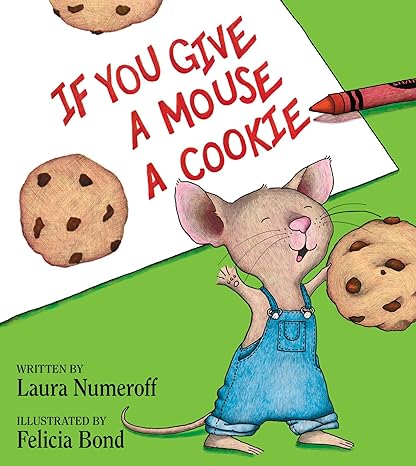
This humorous, circular story uses simple rhymes to create a delightful cause-and-effect tale.
Find it on Amazon for a fun and engaging read.
14. Bear Snores On by Karma Wilson
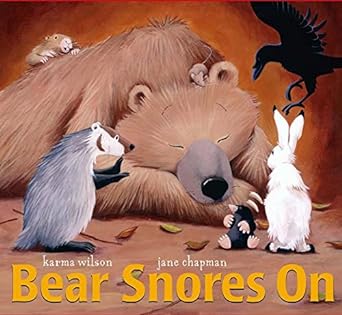
A charming story with rhymes that flow smoothly, “Bear Snores On” is a cozy read for young children. Available on Amazon, it’s great for teaching about animals and hibernation.
15. The Lorax by Dr. Seuss
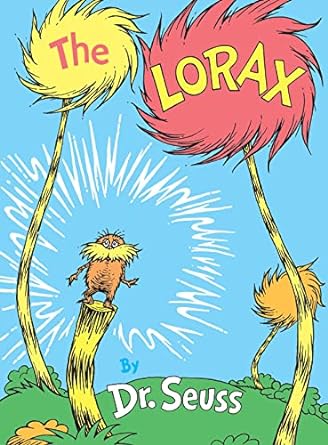
“The Lorax” combines Dr. Seuss’s signature rhymes with a powerful environmental message. It’s a thought-provoking read for young minds, available on Amazon.
16. Chicka Chicka 1, 2, 3 by Bill Martin Jr. and Michael Sampson
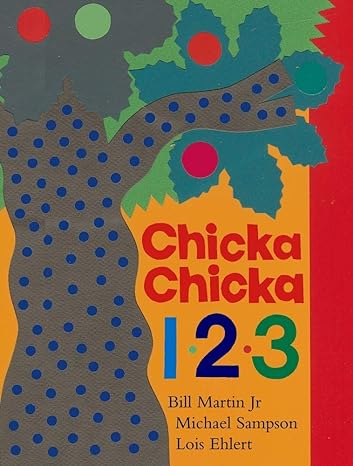
A numerical follow-up to “Chicka Chicka Boom Boom,” this book uses rhyme to teach counting. Its lively text and colourful illustrations are available on Amazon.
17. Pete the Cat: I Love My White Shoes by James Dean
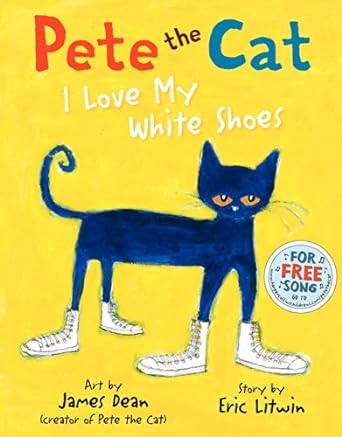
This book combines fun rhymes with a cool, colourful cat character. “Pete the Cat” is available on Amazon and is perfect for engaging young readers.
18. We’re Going on a Bear Hunt by Michael Rosen
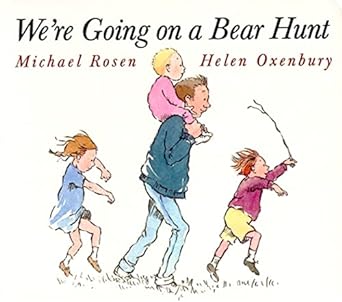
This adventurous book uses repetitive rhymes to take children on an imaginative journey. Available on Amazon, it’s a fun read for active young minds.
19. The Napping House by Audrey Wood
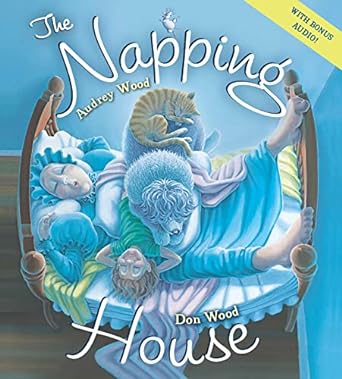
A cumulative tale told in rhyme, “The Napping House” is perfect for teaching sequencing. Its gentle rhythm makes it a great read.
The Napping House is available on Amazon.
20. The Day the Crayons Quit by Drew Daywalt

While not entirely in rhyme, this book’s playful text has a rhythmic quality that engages young readers. The Day The Crayons Quit was our oldest’s favourite book for a while – I’ve read this and he’s read it dozens of times and it makes me smile each time.
Available on Amazon, it’s a unique and humorous story.
21. Five Little Monkeys Jumping on the Bed by Eileen Christelow
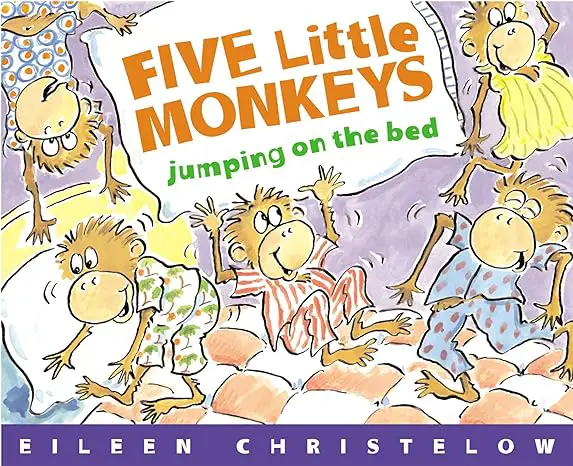
A lively, rhythmic story that captures the mischievous antics of five little monkeys. Available on Amazon, this book is excellent for teaching counting and consequences in a fun way.
22. The Giving Tree by Shel Silverstein
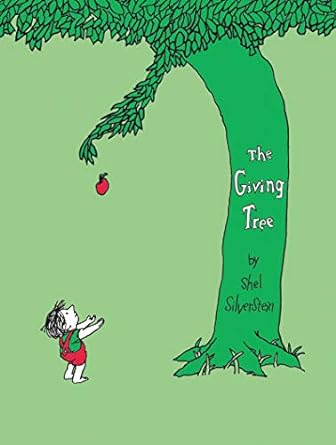
Shel Silverstein’s poignant, rhythmic narrative in “The Giving Tree” offers a touching story about love and selflessness. Its gentle rhythm is available for young readers on Amazon.
23. The Snowy Day by Ezra Jack Keats
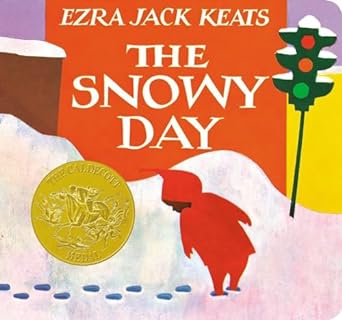
This classic book, available on Amazon, uses simple, evocative language to describe a child’s wonder in a snowy day. Its rhythmic prose makes it a great read for young kids.
24. Fancy Nancy by Jane O’Connor
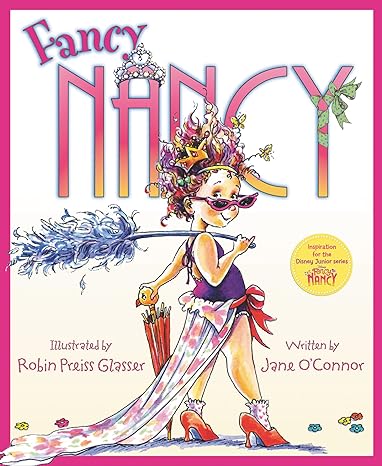
“Fancy Nancy” brings language to life with its rhymes and fancy words. This charming book, available on Amazon, is perfect for expanding vocabulary in a playful way.
25. How Do Dinosaurs Say Goodnight? by Jane Yolen
This book combines humorous rhymes with the timeless theme of bedtime routines. Find this funny and relatable story on Amazon.
26. Each Peach Pear Plum by Allan and Janet Ahlberg
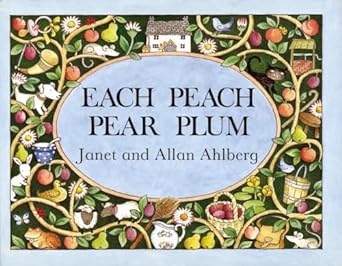
A delightful rhyming book that combines nursery rhymes with a fun hide-and-seek game. Available on Amazon, it’s great for interactive reading.
27. Little Blue Truck by Alice Schertle

“Little Blue Truck” uses rhymes to tell a story of friendship and helping others. Its rhythmic narrative is perfect for young readers, all three of our sons have loved the Little Blue Truck series – in particular when Little Blue goes to the big city in “Little Blue Truck Leads The Way”. The series can be found on Amazon.
28. Don’t Let the Pigeon Drive the Bus! by Mo Willems
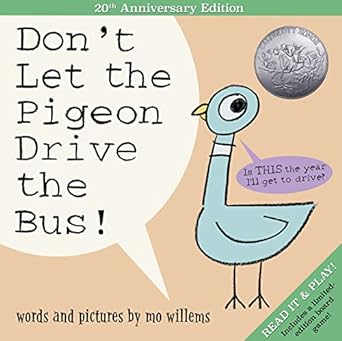
Though not strictly a rhyming book, its playful text has a rhythmic quality that captivates young readers. Available on Amazon, it’s a fun, interactive read.
29. Olivia by Ian Falconer

“Olivia” is a charming story with a rhythmic narrative that follows the adventures of a spunky pig.
This delightful book is available on Amazon.
30. The Tale of Peter Rabbit by Beatrix Potter
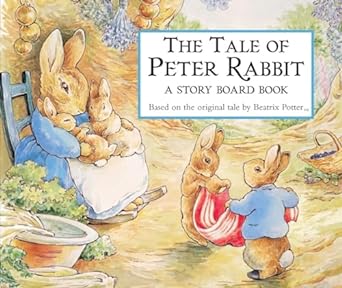
Beatrix Potter’s timeless classic, available on Amazon, uses a gentle, narrative rhythm to tell the story of Peter Rabbit, perfect for young readers.
31. Corduroy by Don Freeman
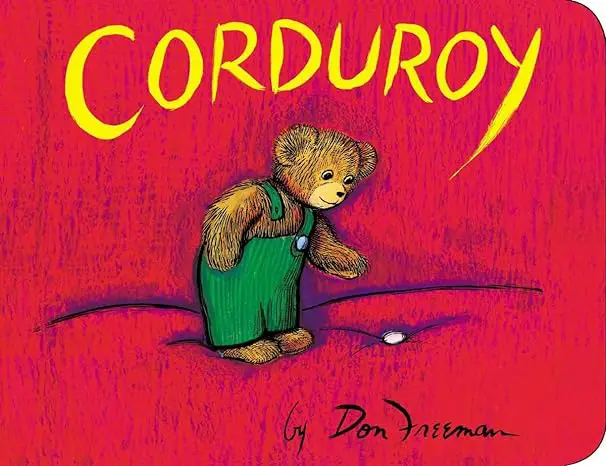
A heartwarming story told in a rhythmic narrative about a teddy bear named Corduroy.
This classic is available on Amazon and is great for teaching themes of friendship and love.
32. The Very Busy Spider by Eric Carle
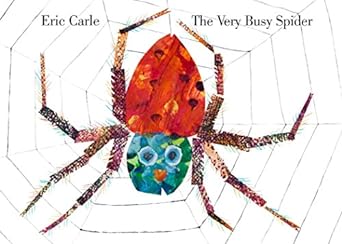
Another Eric Carle classic, this book uses rhymes to teach about animals and perseverance. Find this engaging story on Amazon.
33. Guess How Much I Love You by Sam McBratney

This book, available on Amazon, uses simple, rhythmic language to convey a heartwarming message of love between parent and child. My son and I have had contests after reading this book to try and out do each other with how much we love each other, which is absolutely adorable.
34. The Rainbow Fish by Marcus Pfister
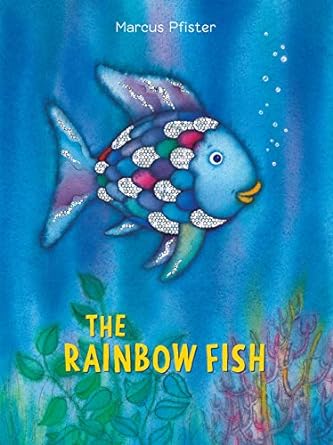
“The Rainbow Fish” uses a rhythmic narrative to tell a story about sharing and beauty.
Its colorful illustrations and moral lesson are available for young readers on Amazon.
35. The Story of Ferdinand by Munro Leaf
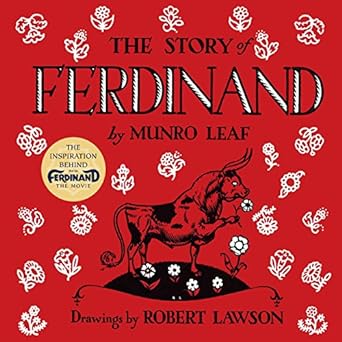
This classic tale, available on Amazon, uses a gentle, rhythmic narrative to tell the story of Ferdinand, a bull who prefers smelling flowers to fighting.
36. Knuffle Bunny: A Cautionary Tale by Mo Willems
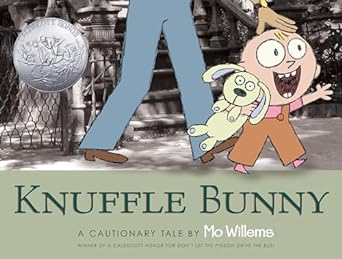
A unique combination of photography and illustration, this book’s rhythmic text tells a humorous and relatable story.
Available on Amazon, it’s great for engaging young readers.
37. Madeline by Ludwig Bemelmans
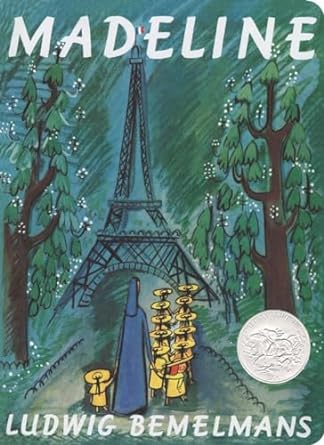
“Madeline” offers a rhythmic, rhyming glimpse into the life of a brave little girl.
This classic story is available on Amazon and is ideal for young readers.
38. The Tale of Jemima Puddle-Duck by Beatrix Potter

Another Beatrix Potter gem, this book uses a rhythmic narrative to tell the story of Jemima Puddle-Duck.
Available on Amazon, it’s great for young children.
39. Alexander and the Terrible, Horrible, No Good, Very Bad Day by Judith Viorst
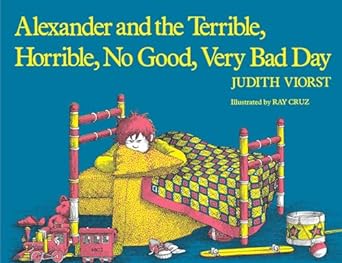
This book, with its rhythmic narrative, perfectly captures the frustrations of a bad day.
A relatable story for young kids, available on Amazon.
40. Miss Rumphius by Barbara Cooney
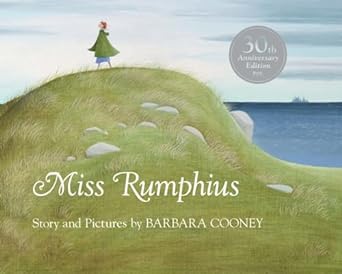
A story that uses rhythmic text to tell the life of Miss Rumphius and her quest to make the world more beautiful.
Available on Amazon, it’s an inspiring read for young children.
Each of these books adds to the rich tapestry of rhyming and rhythmic stories essential for kindergarten-aged children. They are all available on Amazon, offering a convenient way for parents and educators to access a wide range of engaging, educational stories that will enrich the reading experience for young learners.
Timeless Tales to Modern Marvels: The Evolution of Rhyming Books for Kindergarteners
The world of children’s literature is rich with rhyming books, ranging from classic nursery rhymes to modern hits. Each book, whether a timeless piece or a contemporary creation, plays a unique role in kindling young children’s love for reading and language. In this section, we delve into the enduring charm of classic nursery rhymes and shine a light on some of the modern classics that have captivated young readers.
The Everlasting Charm of Nursery Rhymes
Nursery rhymes, with their simple melodies and repetitive patterns, have been a cornerstone of childhood for generations. Titles like “Hickory Dickory Dock,” “Humpty Dumpty,” and “Baa, Baa, Black Sheep” are more than just catchy tunes; they are integral in developing phonological awareness among young learners. These rhymes are not only fun but also introduce children to the rhythm and structure of language, making them an excellent tool for early literacy development. Their repetitive nature aids in memory and recall, an essential skill in the formative years of learning.
Modern Classics: A New Wave of Rhyming Books
In recent years, the genre of children’s rhyming books has seen the emergence of modern classics that resonate with today’s young readers. These books often blend traditional rhyming schemes with contemporary themes and vibrant illustrations. For example, titles like “The Gruffalo” by Julia Donaldson and “The Day the Crayons Quit” by Drew Daywalt have become favorites among kindergarteners for their clever rhymes and engaging stories. These books not only entertain but also impart valuable life lessons through their narratives.
Bridging the Gap: The Role of Rhyming Books in Early Education
Rhyming books, both classic and modern, play a crucial role in bridging the gap between play and education. They make learning a joyous and engaging experience for young kids. By combining fun with education, these books lay the groundwork for a lifelong love of reading. Whether it’s the rhythmic cadence of a nursery rhyme or the witty verses of a modern story, these books capture the imagination of young minds and encourage them to explore the world of words.
In summary, the journey from classic nursery rhymes to today’s modern hits in children’s rhyming books showcases the enduring power of rhythm and rhyme in early education. These books continue to be a staple in fostering early literacy skills, proving that the magic of a well-told rhyming story transcends time.
Interactive Fun: Combining Rhyming Books with Engaging Activities for Kindergarten
Interactive reading is a dynamic way to enhance the learning experience for young children, especially in kindergarten. By pairing rhyming books with related activities, educators and parents can create an immersive and engaging environment that not only enhances reading skills but also fosters creativity and critical thinking. Let’s explore how rhyming books can be transformed into a more interactive and enjoyable learning experience through various activities and lesson plans.
Bringing Stories to Life: Activity Ideas for Popular Rhyming Books
One effective way to make reading more interactive is by designing activities that complement the themes and rhythms of popular rhyming books. For instance, after reading “Chicka Chicka Boom Boom,” a great way to reinforce alphabet learning is through letter-themed crafts or alphabet treasure hunts. Similarly, following a read-aloud of “Dr. Seuss” books, children can engage in word family games or rhyming word challenges, enhancing their phonemic awareness and vocabulary.
Rhyme Time: Engaging in Rhyming Games and Crafts
Rhyming games and crafts are not only fun but are also instrumental in teaching young kids about language patterns. Simple activities like creating rhyming word cards, playing matching games, or even composing silly rhymes together can significantly reinforce the lessons taught in rhyming books. These activities are not only a great way to solidify learning but also to encourage children to express themselves creatively.
Interactive Lesson Plans: From Reading to Learning
Developing lesson plans that incorporate rhyming books can transform the traditional reading session into a comprehensive learning experience. For example, after reading “Brown Bear, Brown Bear, What Do You See?” educators can create a lesson plan that includes colour recognition activities, animal sound matching games, and even storytelling sessions where children can create their own versions of the story.
Story Reenactment: Bringing Characters to Life
Reenacting stories from favourite rhyming books is an excellent way for children to engage with the text. This could involve role-playing, using puppets to retell the story, or creating small plays. Such activities not only deepen their understanding of the story but also develop their social and communication skills.
Rhyming Book Clubs: A Collaborative Learning Experience
Creating a book club for kindergarteners focused on rhyming books can foster a collaborative and interactive reading environment. Discussions about favourite rhyming books, sharing personal interpretations, and group reading sessions can make the experience more engaging and enjoyable for young readers.
In conclusion, integrating interactive activities with rhyming books is a powerful approach to kindergarten education. It not only makes learning more engaging and fun but also enhances the development of language skills, creativity, and social interaction. By incorporating these ideas into their lesson plans, educators and parents can provide a rich, immersive learning experience that goes beyond the pages of a book.
Enhancing Phonological Awareness and Sight Word Recognition with Rhyming Books
Rhyming books play a pivotal role in developing phonological awareness and sight word recognition in young children, particularly in the kindergarten stage. This section delves into how these books, with their rhythmic patterns and simple words, are instrumental in early reading development. We’ll explore the significance of these elements in laying a solid foundation for literacy skills among young learners.
Phonological Awareness: The Rhythmic Pathway to Reading Skills
Phonological awareness, the ability to recognize and manipulate sounds in spoken language, is a critical early literacy skill. Rhyming books are exceptionally effective in enhancing this skill in young kids. The repetitive and rhythmic nature of these books helps children become attuned to the sounds within words, which is essential for reading and spelling. For instance, as children listen to and engage with the rhymes in books like “Dr. Seuss” or “Chicka Chicka Boom Boom,” they begin to understand that words are made up of smaller sound units, a realization crucial for decoding when they start to read.
Sight Words Mastery Through Rhyming Books
Sight words, often irregularly spelled words that children are encouraged to recognize by sight, are another key aspect of early literacy. Rhyming books often incorporate these words within their texts, presenting them in a context that makes them easier to remember. The repetition of simple words in books like “Brown Bear, Brown Bear, What Do You See?” allows children to see and hear these words multiple times, aiding in their recognition and memorization. This repeated exposure is critical in helping young readers build a repertoire of sight words, which is essential for fluency and comprehension.
The Power of Repetition and Simple Words in Early Reading
The simplicity and repetition found in rhyming books are not just for entertainment; they serve a crucial educational purpose. Simple, repetitive patterns found in these books provide young readers with the practice they need to develop confidence in their reading abilities. This repetition reinforces word recognition, sentence structure, and vocabulary. Furthermore, the predictable nature of these patterns provides a sense of achievement and encourages continued engagement with reading.
Enhancing At-Home Learning with Rhyming Books for Young Children
Rhyming books are not just tools for classroom learning; they have a significant role in at-home education as well. Parents can leverage these great books to reinforce language skills and foster a love of reading in their children. This section explores how families can use rhyming books effectively at home, turning reading into a fun and educational activity that goes beyond the school environment.
Bedtime Stories: A Calming Routine with Educational Benefits
Incorporating rhyming books like “Goodnight Moon” or your children’s favourite Dr. Seuss book into bedtime routines can be both soothing and educational. These books, with their rhythmic and gentle narratives, are perfect for settling young minds while subtly enhancing their language skills. Reading aloud at bedtime not only helps in developing a reading habit but also provides a precious bonding opportunity for parents and children.
Interactive Reading Sessions in Family Time
Parents can make reading more interactive and fun by involving their children in the storytelling process. Asking questions about the story, encouraging children to predict rhymes, and discussing the themes of the books can make reading sessions more engaging. Books with repetitive and catchy rhymes, like “Dr. Seuss” titles, are great for such interactive sessions, as they invite participation and discussion.
Creating a Home Library of Rhyming Books
Building a collection of rhyming books at home can provide children with easy access to a variety of reading materials. Parents can include a mix of classic rhyming stories and modern favorites to ensure a diverse range of themes and language experiences. This personal library can become a treasure trove for young readers, sparking their curiosity and encouraging independent reading.
Reinforcing Lessons Through Rhyming Activities
Parents can extend the learning from rhyming books with related activities. For example, after reading a book about animals, families can create a craft project based on the story. Rhyming word games, drawing illustrations for their favorite rhymes, or even composing simple poems can also reinforce the lessons learned from these books.
The Role of Parents in Early Literacy Development
Parents play a crucial role in their children’s early literacy development. By reading rhyming books at home, they not only reinforce what is taught in the classroom but also instill a lifelong love for reading. Their involvement in reading activities shows children the value and joy of literature, setting the foundation for strong reading skills and academic success.
In conclusion, utilizing rhyming books at home is an excellent way for parents to contribute to their children’s literacy journey. These books, with their fun and educational content, are not only tools for learning but also a means of nurturing a bond through shared reading experiences. By integrating these books into home routines, parents can effectively support and enhance their children’s love for reading and learning.
Cultivating a Passion for Reading Through Rhyming Books in Kindergarten
As we conclude, it’s clear that rhyming books are invaluable in the kindergarten classroom and at home, fostering not just literacy skills but also a lifelong love of reading in young children. These books, with their engaging rhythms and memorable patterns, are more than mere tools for teaching; they are gateways to a world of imagination and learning.
Summarizing the Benefits of Rhyming Books for Young Learners
Rhyming books offer a multitude of benefits for kindergarten-aged children. They enhance phonemic and phonological awareness, crucial for early reading skills. The repetitive patterns and simple language structure in these books help in memorizing sight words and understanding the basics of sentence construction. Furthermore, the playful and engaging nature of rhymes makes learning a fun and enjoyable experience, encouraging children to engage with books and develop a positive attitude towards reading.
The Role of Rhyming Books in Language and Cognitive Development
The impact of rhyming books extends beyond reading skills. They contribute significantly to language development, introducing young readers to a wide range of vocabulary in a context that is easy to grasp. The rhythmic patterns in these books also aid in cognitive development, helping children recognize patterns and sequences, which are essential skills in all areas of learning.
Encouraging Integration of Rhyming Books in Education and Parenting
For parents and educators, incorporating rhyming books into the educational journey of children is a step towards building a strong foundation in literacy. These books are not only tools for teaching reading but also a means to bond with children, spark their creativity, and instill in them a love for stories. Reading rhyming books aloud, engaging in interactive activities related to these books, and discussing the stories and characters can significantly enhance the reading experience for children.
Final Thoughts: Laying the Foundation for Future Success
In conclusion, rhyming books are a fundamental component in nurturing a love for reading in kindergarten-aged children. They lay the groundwork for future academic success and personal growth. By embracing these books, parents and educators can provide children with the skills, confidence, and enthusiasm they need to embark on their lifelong reading journey. Let’s continue to cherish and utilize these delightful tools in guiding our young learners towards a bright and literate future.

